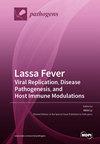Characterising the Metabolomic Diversity and Biological Potentials of Extracts from Different Parts of Two Cistus Species Using UHPLC-MS/MS and In Vitro Techniques
IF 3.3
3区 医学
Q2 MICROBIOLOGY
引用次数: 0
Abstract
This study investigates the biochemical composition and biological properties of different parts (leaves, roots, and twigs) of two Cistus species (Cistus monspeliasis and Cistus parviflorus). The extracts were analysed using UHPLC-MS/MS to determine their chemical profiling. A range of antioxidant assays were performed to evaluate the extract’s antioxidant capabilities. The enzyme inhibition studies focused on acetylcholinesterase (AChE), butyrylcholinesterase (BChE), α-amylase, and α-glucosidase and tyrosinase. In addition, the study examined the antimicrobial effects on different bacteria and yeasts and evaluated the toxicity using the MTT assay. Quinic acid, citric acid, gallic acid, catechin, quercetin derivatives, kaempferol, myricetin, ellagic acid, prodelphinidins, procyanidins, scopoletin, and flavogallonic acid dilactone are the main bioactive compounds found in both species. In enzyme inhibition assays, C. monspeliasis roots exhibited significant activity against acetylcholinesterase (AChE) and butyrylcholinesterase (BChE), with the values of 2.58 ± 0.02 mg GALAE/g and 11.37 ± 1.93 mg GALAE/g, respectively. Cytotoxicity studies showed mostly weak toxicity, with some samples moderately reducing viability in RAW and HepG2 cells. These findings underscore the diverse biochemical profiles and bioactive potential of Cistus species, suggesting their utility as natural sources of antioxidants and enzyme inhibitors for pharmaceutical and nutraceutical development.利用超高效液相色谱-质谱/质谱(UHPLC-MS/MS)和体外技术表征两种肉苁蓉不同部位提取物的代谢组多样性和生物潜力
本研究调查了两种肉苁蓉(Cistus monspeliasis 和 Cistus parviflorus)不同部位(叶、根和枝)的生化成分和生物特性。提取物采用超高效液相色谱-质谱/质谱法进行分析,以确定其化学特征。为评估提取物的抗氧化能力,还进行了一系列抗氧化试验。酶抑制研究主要针对乙酰胆碱酯酶(AChE)、丁酰胆碱酯酶(BChE)、α-淀粉酶、α-葡萄糖苷酶和酪氨酸酶。此外,研究还考察了对不同细菌和酵母菌的抗菌效果,并使用 MTT 试验评估了毒性。在这两种植物中发现的主要生物活性化合物有奎尼酸、柠檬酸、没食子酸、儿茶素、槲皮素衍生物、山柰酚、杨梅素、鞣花酸、原鹅掌楸素、原花青素、莨菪亭和黄酮酸二内酯。在酶抑制试验中,蒙山鸡冠花根对乙酰胆碱酯酶(AChE)和丁酰胆碱酯酶(BChE)具有显著的活性,分别为 2.58 ± 0.02 mg GALAE/g 和 11.37 ± 1.93 mg GALAE/g。细胞毒性研究显示,大部分样品毒性较弱,有些样品会适度降低 RAW 和 HepG2 细胞的存活率。这些发现凸显了肉苁蓉物种多样的生化特征和生物活性潜力,表明它们可作为抗氧化剂和酶抑制剂的天然来源,用于医药和保健品的开发。
本文章由计算机程序翻译,如有差异,请以英文原文为准。
求助全文
约1分钟内获得全文
求助全文
来源期刊

Pathogens
Medicine-Immunology and Allergy
CiteScore
6.40
自引率
8.10%
发文量
1285
审稿时长
17.75 days
期刊介绍:
Pathogens (ISSN 2076-0817) publishes reviews, regular research papers and short notes on all aspects of pathogens and pathogen-host interactions. There is no restriction on the length of the papers. Our aim is to encourage scientists to publish their experimental and theoretical research in as much detail as possible. Full experimental and/or methodical details must be provided for research articles.
文献相关原料
| 公司名称 | 产品信息 | 采购帮参考价格 |
|---|
 求助内容:
求助内容: 应助结果提醒方式:
应助结果提醒方式:


